Dark Park
A downloadable tool
Dark Park: Practice walking in the dark
Dark Park is a virtual reality (VR) application designed to help you lessen the effect of Nyctophobia (fear of the dark) through graded exposure. It does this by placing the user in a peaceful park at night time and giving you control over the environmental factors that cause distress, allowing for gradual exposure and, eventually, comfort.
Description
Dark Park simulates a walk through a park at night. Users perform gestures with their hands to bring light back to the environment, or interact with onbjects to control the light (both ambient and from street light) and sounds within the environment. Users can gradually expose themselves to darker settings with the goal of lessening the impact of their phobia on their day to day activities.
Evidence suggests that many phobias can be treated with VR- based exposure therapy (Shanthini et al., 2022). For exposure therapy to be successful, the experience should be close to identical the real-world context in which a person would experience their phobia - it is this closeness that allows gradual unlearning of the fearful reaction (Scozzari and Gamberini, 2011). With this need for tight mapping between practice and reality in mind, consider exposure therapy for outdoor settings: where indoor luminosity could be controlled by a dimmer switch, outdoor luminosity is constrained by the time of day and the presence of uncontrolled external factors such as other people in the location, or the weather.
Dark Park seeks to provide for an outdoor context what would normally be only possible in an indoor environment – control over light, sound, and a safe environment where the user can begin to relax. The use of VR in this context is necessary for both the ability to simulate a world and gain control over these variables, but also because of the need for close mapping between the practice environment and the fearful real-life cues. It is imperative that the user feel immersed in the simulation, such that the new environmental control affordances offered by the simulation do not break the verisimilitude that makes exposure therapy effective for unlearning fears.
Interaction Design
The user interacts with the environment lighting and sound levels using gestures that, while likely slower to use than a typical 2D text based interface , have a chance to more intuitively map to their functions (Cabral, Morimoto and Zuffo, 2005). If the user wants to immediately light the park, they can make a ‘stop’ gesture by pointing their palm forwards. Environmental controls are found at park benches, with each control represented by a floating model that implies its purpose. The user can swipe left or right near the model streetlamp, radio, or sun to adjust the streetlights, environmental sounds, and ambient light respectively. They can remove the controls by performing a ‘thumbs up’ gesture to indicate that they are happy with the current settings. Controls can be revealed again by forming a fist. In a future implementation the motion to hide the controls would be something else - a 'sweeping away' motion may be more intuitive. Visual indicators should also be used to show the user when their hands are close enough to interact with the controls. This gesture based implementation is also inconsistent - the VR tracking system often misinterprets innocuous movements as command gestures and unnecessarily hides or shows the control system, and potentially irritates the user with repetitive audio cues with each transition.
Navigation is performed by teleportation. In this prototype, movement is not a core interaction and is achieved using the VR controllers, whereas in a full release it would be congruent with the other gesture-based locomotion and not require a controller. As it stands, it is difficult and cumbersome for a user to adjust settings with gestures, but then need to pick up a controller in order to move about the environment. In a full implementation the range of noises would also be greater – rustling bushes, for example, could be included if the user is fearful of sudden nearby noises. Expanding the range of variables under the control of the user should improve the contextual relevance of the simulation.
Storyboard
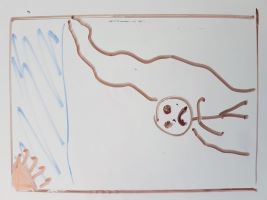
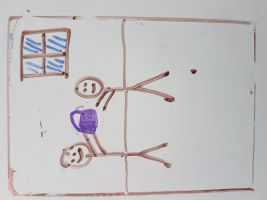

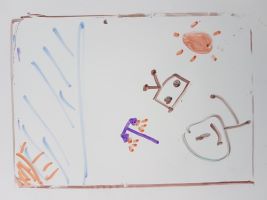
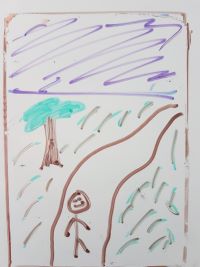

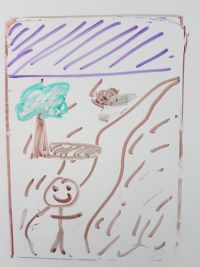
Technical Details
This application was built in Unity (2022.1.7f1) and was tested using an Oculus Quest 2. Users running the application will require a headset and handheld controllers. Note that movement utilises the Oculus controllers, but the gesture-based interactions require empty hands. This is a technical limitation of the prototype, and users are advised to experiment with environment settings before beginning to move through the park.
3D Models
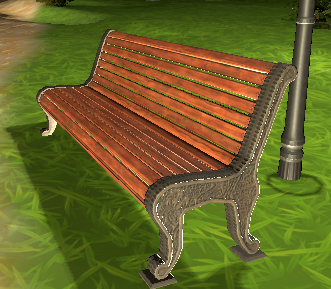
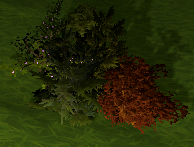
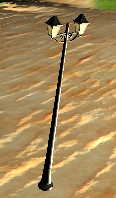


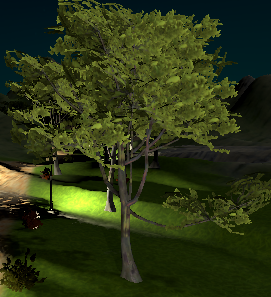
References
Cabral, M., Morimoto, C. and Zuffo, M., 2005. On the usability of gesture interfaces in virtual reality environments. Proceedings of the 2005 Latin American conference on Human-computer interaction - CLIHC '05.
Scozzari, S. and Gamberini, L., 2011. Virtual reality as a tool for cognitive behavioral therapy: a review. Advanced computational intelligence paradigms in healthcare, 6, pp.63–108.
Shanthini, E., Sangeetha, V., Selvapriya., P., Shivani., B., Shanmuga Priya., M. and Anindita., K., 2022. Virtual Therapy for Phobias:A Human Computer Interaction. 2022 IEEE World Conference on Applied Intelligence and Computing (AIC)
Resources Used
Audio
Crickets at night: https://www.freesoundslibrary.com/cricket-noise-at-night/
Dog barking at night with crickets: https://www.freesoundslibrary.com/dogs-barking-in-a-countryside-night-ambience/
Models
Benches and Lamps: https://assetstore.unity.com/packages/3d/props/exterior/park-props-pack-49221
Radio: https://assetstore.unity.com/packages/3d/props/old-radio-148636
Shrubs: https://assetstore.unity.com/packages/3d/vegetation/plants/yughues-free-bushes-1...
Sun: https://assetstore.unity.com/packages/3d/environments/planets-of-the-solar-syste...
Trees: https://assetstore.unity.com/packages/3d/vegetation/trees/realistic-tree-9-rainb...
Night sky box and terrain textures: https://assetstore.unity.com/packages/2d/textures-materials/sky/fantasy-skybox-f...
Leave a comment
Log in with itch.io to leave a comment.